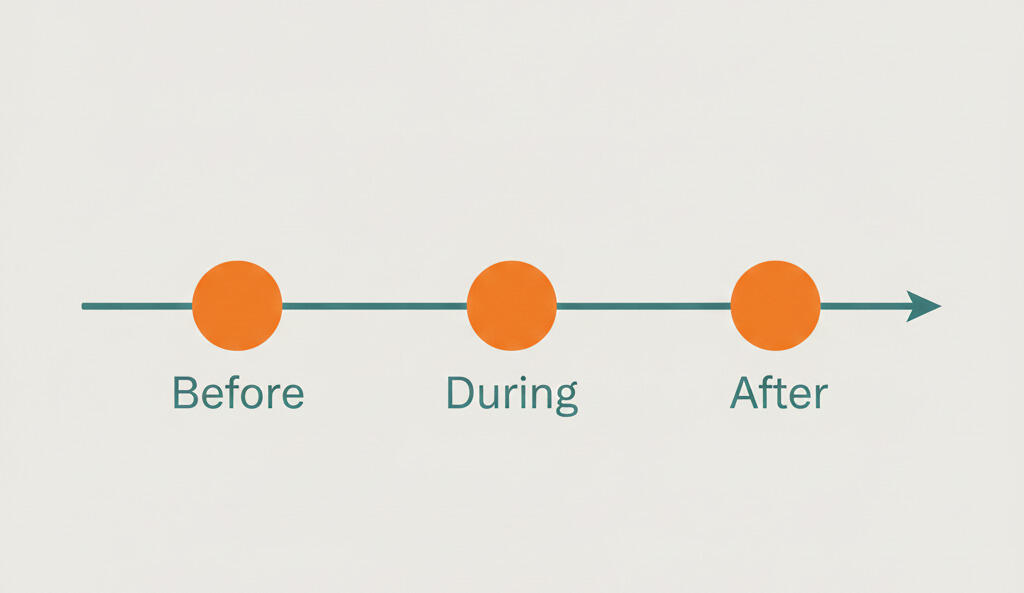Simple project management for small businesses and startups
Contents
Project management often falls apart for small teams. Many rely on emails, spreadsheets, or chat apps, but these tools lack structure. Tasks slip, updates scatter, and deadlines are missed. On the other side, enterprise platforms try to solve everything with complex features, but they slow small teams down with setup, training, and too many choices.
Small businesses and startups need something different: a simple way to plan work, assign tasks, and keep everyone aligned without adding overhead. The right tool should make tasks clear, deadlines visible, and handoffs smooth. It should fit the pace of a three-person startup as well as a small team inside a larger company.

1. Why small businesses need project management
Even the smallest teams need structure. Without a clear system, tasks end up in emails, chats, or people's heads, and details are forgotten. Deadlines slip because no one knows who owns the next step. Responsibilities blur when two people assume the other is handling the work.
For small businesses, project management is about keeping work visible and making sure each task has an owner and a deadline. A simple setup helps people focus. According to PMI's report, organizations that align project management with strategy see 38% more projects meet their original goals and waste 28 times less money than underperformers. For a small business, that margin can decide whether clients return or look elsewhere.
Take a three-person startup preparing a product launch. They do not need enterprise scheduling software. They need a shared task board where each step, such as writing copy and finalizing visuals, is visible. At a glance, everyone knows what is done, what is in progress, and what is waiting.
2. The challenges of small teams
Small businesses and startups share limitations that make project management harder than it should be. These challenges often explain why deadlines are missed and why complex tools rarely fit their workflow.
- People wearing many hats.
In small teams, one person often handles multiple roles in a single day. They may manage sales calls in the morning, deliver client work in the afternoon, and handle invoicing in the evening. Without a clear structure, important tasks get missed.
- Limited budgets and no dedicated project managers.
Most small businesses cannot afford a full-time project manager. Instead, the work of tracking deadlines and deliverables falls on founders or senior staff, who already have other priorities.
- Priorities are changing quickly.
Startups in particular shift direction as new opportunities appear. A week focused on product development might suddenly switch to pitching investors or onboarding a client. Tools built for rigid workflows make these shifts harder, while simple systems allow quick reassignment of tasks and updates to deadlines.
- Clients and investors are expecting regular updates.
Small teams often work under the close eye of stakeholders. If progress is not visible, trust can fade away. Scattered spreadsheets or overloaded dashboards fail to reassure clients. A shared board that shows tasks, owners, and due dates provides a clear picture.
Each of these factors makes feature-heavy systems a poor fit. By cutting out what teams do not need, simple project management keeps the focus on delivering work, not on managing the software.
3. Why simplicity matters more than features
For small businesses and startups, success depends less on having every possible feature and more on keeping work clear, fast, and adaptable. Tools overloaded with settings or dashboards often look powerful but quickly slow a small team. The real edge comes from software that stays out of the way and helps people move projects forward.
Clarity instead of complexity
Small teams need to know three things at any moment: what tasks are active, who owns them, and when they are due. When software buries this under layers of custom fields, multiple dashboards, or advanced reporting options, visibility disappears. Time gets wasted figuring out where to look instead of progressing on the work itself.
A simple project plan avoids this trap by keeping the essentials in one view. A shared board or list shows every task with its owner and due date. Status is clear, so team members do not have to ask for updates. Clients and stakeholders can also see progress without requesting a separate report. That clarity saves time, reduces mistakes, and helps small businesses keep confidence high even with limited resources.
Faster adoption and easier daily use
For a tool to deliver value, the team has to use it every day. Complex platforms often require training sessions or long setup guides before people can do basic actions like adding a task. In a small business, no one has the bandwidth for that. If the software feels heavy, people avoid it and create their own side systems, which breaks visibility.
Simple tools are different. A new team member can learn the basics in minutes: create a task, assign it, and set a due date. That speed of adoption ensures the system is used daily, not just before meetings. Once the tool becomes part of the flow, projects stay on track without extra reminders or reports. For startups moving fast, quick onboarding is not a nice-to-have; it is a requirement. This ease of use is one of the key project success factors for small teams that cannot afford long delays.
Flexibility when priorities change
Startups and small businesses shift focus often. A team may be deep in development work one week and then switch to a client campaign the next. Complex software, with rigid workflows and fixed permissions, slows these pivots down. Reconfiguring dashboards or updating automations takes time at the very moment when speed is critical.

A simple system adapts without friction. Tasks can be reassigned, dates updated, and project boards reorganized in minutes. The structure bends with the priorities instead of resisting them. That flexibility keeps momentum high and ensures projects continue moving even as the business changes course. In practice, it means fewer delays, clearer focus, and smoother delivery when it matters most.
4. Practical ways to keep project management simple
Small businesses and startups do not need complicated methods to keep projects on track. The real progress comes from consistent, lightweight practices that make daily work easier. These steps keep attention on delivery instead of administration.
- Use one shared system for all projects
Splitting tasks across spreadsheets, chat threads, and emails creates confusion and duplicate work. A single tool keeps everything in one place, which makes updates clear and reduces the risk of missed tasks. It also improves visibility for clients and investors who want to know how projects are moving. - Assign one clear owner per task
Shared responsibility often means no responsibility. Giving each task a single owner ensures accountability and smoother handoffs. This avoids confusion about who should update the status or provide feedback, which is a common source of project risks in small teams. - Set realistic deadlines that match available capacity
Deadlines only work if they match the team's actual bandwidth. Overloading people leads to missed dates and rework. A clear structure helps spread out work evenly and shows whether a new task fits or needs to be delayed. - Keep task lists short and current
Long lists become noise. A short, updated list highlights what matters now and helps small teams act quickly. Old or irrelevant tasks should be cleared out so focus stays sharp. - Review progress in short, regular check-ins
A five- to ten-minute review is often enough for a small business. Use an Eisenhower matrix view of tasks to confirm what is urgent and important, then agree on next steps. These check-ins keep everyone aligned and help spot blockers early without extra reports.
By following these steps, small teams build a project management style that is simple, repeatable, and sustainable. It avoids the weight of enterprise systems while still supporting growth.
5. How Breeze helps small businesses and startups
Breeze is designed to keep project management simple without cutting out the bits small businesses and startups need. Boards and lists show the whole picture at a glance so teams can see what's active, what's coming up and where work is blocked. Each task can be created, assigned and tracked in seconds.
Deadlines are also easier to follow with the calendar view. It puts all due dates in one place so teams can plan workloads and avoid last-minute surprises. Because setup takes minutes, not hours, Breeze doesn't interrupt ongoing projects. It adapts as the team grows but it does so without adding extra layers that require more training or new processes.

Another benefit is that Breeze reduces the need for multiple tools. Tasks, comments and files stay together so decisions and updates are in context. Teams no longer have to switch between chat, email and apps just to keep a project moving. This simplicity means work flows smoothly regardless of the team size.
6. Final thoughts
Small businesses and startups work best when project management is simple. Tools packed with extra features often slow teams down with long onboarding and complex features. A lighter approach saves time, makes ownership clear, and keeps deadlines visible.
The focus should always be on clarity, accountability, and progress. Breeze was built with this in mind, giving small teams a way to stay organized without heavy setup. For teams that want efficiency, trying Breeze is a practical step toward keeping projects simple.








